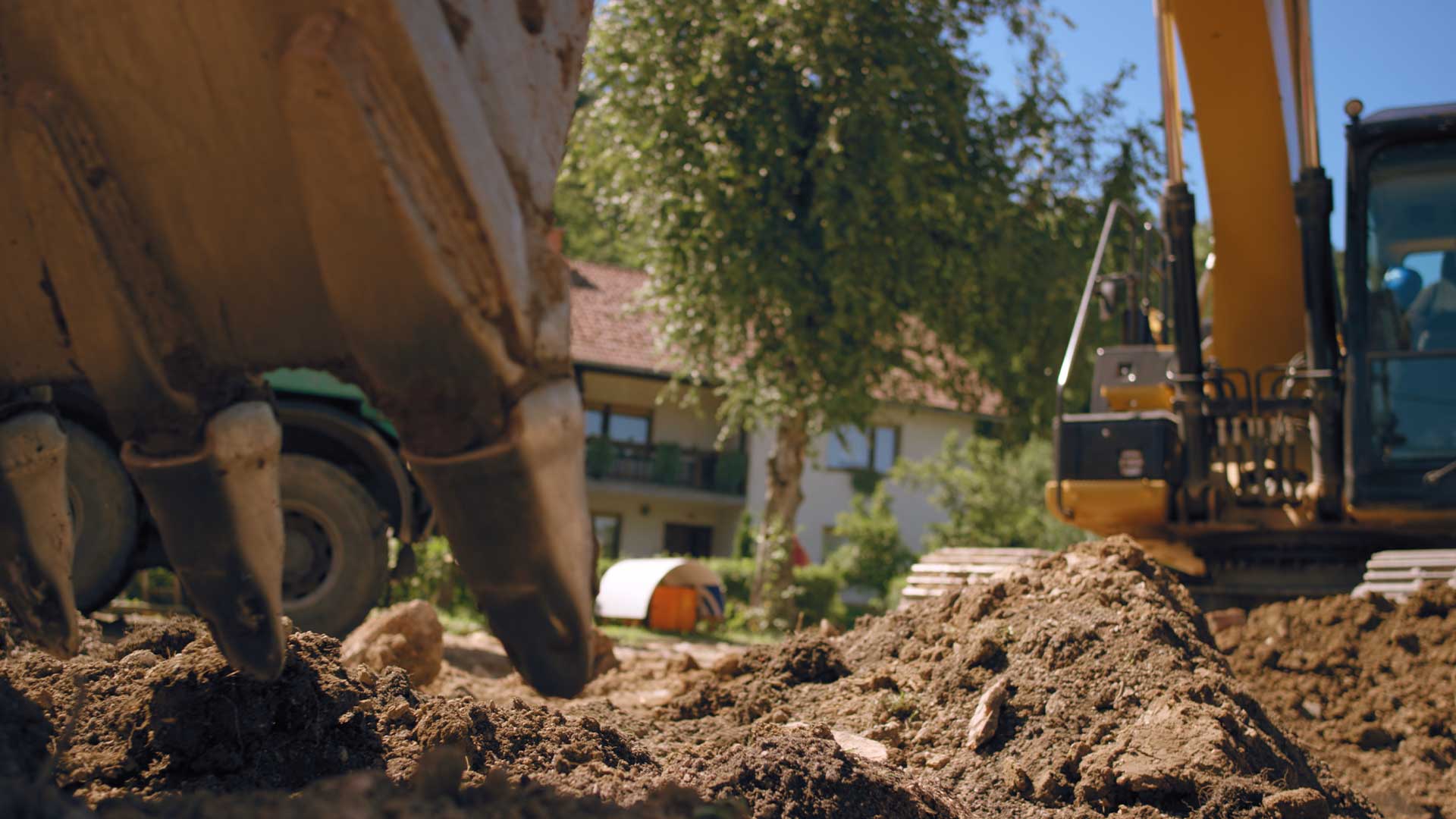For many homeowners in Florida, septic systems are a vital part of their property, with 1 in 3 residents relying on a septic system. As a leading septic services provider in Tampa Bay and Central Florida, ACE Septic installs, maintains, and repairs septic systems that account for changes in the seasonal water table. It’s vital for Floridians because the fluctuations can damage their septic system, leading to health risks, environmental concerns, and expensive repairs.
We love educating our customers on their systems, so read on and learn more about this important component. We’ll discuss dosing tanks, why they’re used, and compare them with gravity systems.

What is a Septic System?
A septic system is a self-contained, on-site wastewater treatment system. Septic systems are used in homes, businesses, restaurants, and other buildings that aren’t connected to a central sewer system.
Wastewater from toilets, showers, sinks, and laundry is collected in a septic tank. The tank allows solids to settle to the bottom while storing effluent (also known as gray water) until it is discharged into a drain field for further treatment.
Most septic systems are gravity-based, relying on the natural pull of gravity to move effluent from the septic tank to the drain field. These systems are usually preferred because there is no need for pumps or other expensive mechanical components. Gravity systems are cheaper to install and maintain than most other septic systems. However, we can’t always rely on gravity as a solution. Many homes don’t have the natural landscaping to take full advantage of gravity and require systems to move the effluent through the system. The solution: add a dosing tank.
What is a Dosing Tank?
A dosing tank is an add-on to the septic system that uses a pump mechanism to move the effluent to the drain field. This system is used primarily when the drain field sits above the tank, neutralizing gravity. Dosing tanks are required for some installations due to landscaping or other considerations preventing a pure gravity system.
Dosing tanks are an additional expense, in addition to the septic tank. Still, they are often required if you’re dealing with difficult soil conditions or a situation in which gravity will not move the wastewater into the drain field.
How Does a Dosing Tank Work?
Within the septic tank, effluent flows into the tank, allowing biosolids to settle to the bottom while the gray water flows from the septic tank into the dosing tank. When the gray water reaches a predetermined level in the dosing tank, a float switch activates the pump, pushing the wastewater to the drain field. The pump runs until the fluid reaches a lower limit, as determined by your contractor. This process repeats each time effluent levels reach the float operation level.
If your dosing tank isn’t draining properly and is holding too much effluent, a high water alarm will audibly and visibly sound. These alarms are usually located outside near the dosing tank or on the home’s exterior wall.
The dosing tank pump will run continuously if the tank is consistently full and can overheat, burn out, or break down. That’s why it’s crucial to have a dosing tank that is the right size for your home.

Florida Regulations and Dosing Tanks
Septic systems in Florida often require dosing tanks. Even in areas where a gravity system can be utilized, state and environmental regulations could still require a dosing tank. In ACE’s opinion, Floridians are collectively responsible for ensuring Florida’s aqueducts remain clean and sanitary. An easy way for us all to play our part is to ensure septic systems function efficiently.
The year of your home will determine if you’re subject to the following regulations, which affect the septic system you can use:
| Homes built before 1972 required a 6-inch separation between the bottom of the drain field and the water table. |
| Homes built between 1972 and 1995 required a 12-inch separation between the bottom of the drain field and the water table. |
| Homes built from 1995 onward require a 24-inch separation between the bottom of the drain field and the water table. |
Many homes in Florida have drain fields that are equal in elevation or higher than the tank, and because Florida’s seasonal water table can vary greatly throughout the region, a dosing tank may be your only option.
Impact of the Water Table
When installing a septic system, we first test the soil by measuring the distance between the ground and the first indicator of water saturation. This depth from ground level is called the Seasonal High Water Table. This is a broad term that indicates the “seasons” of water fluctuations in an area and has nothing to do with the yearly seasons (winter, summer, spring, and fall). It can take years for a water table to change, not months.
In Florida, the seasonal high water table is constantly rising, not shrinking. Because of this, the state established the regulations on separation listed above to ensure that homeowners’ drain fields would not enter the water table throughout the unit’s expected lifespan.
Let’s use some basic math to demonstrate this point.
Say, for instance, that your observed seasonal high water table is 50 inches, and you must dig down 30 inches to lay your drainfield pipe. This means the bottom of your drainfield will be 30 inches, and the separation between the bottom of the drainfield and the high water will be 20 inches.
If this is a new home (built after 1995), you must maintain a 24-inch separation, and the planned system would be 4 inches short. In this scenario, your drain field would be installed with a 10-inch mound over the drainfield (4 inches for the separation and 6 inches between the top of the drain field and ground level). And if the tank can’t be set 4 inches higher in the ground, you would need a dosing tank.
As part of our installation process, ACE Septic will determine whether your septic system needs a dosing tank. These systems help prevent septic system backups, prolonging the life of one of the most critical elements of your home or business/
Cost of a Dosing Tank
Remember that for many Floridians, a dosing tank is not just a “nice-to-have” but a must-have. Knowing this will soften the reality that a dosing tank can cost anywhere from $2,400 to $3,000. When this is added to a septic system installation or large-scale maintenance project, the price can quickly exceed $8,000.
However, a properly running, reliable septic system is an investment worth paying for. After all, your home is your greatest asset, and when it comes time to sell that asset, a septic check will be required. Making this investment now will help maintain your home’s value and preserve the life of your septic system.
Impact on the Environment
By having an elevated drainfield, homeowners lessen the impact of septic systems on the environment and their septic systems. Dosing tanks ensure regular pressure at set intervals and don’t stress the soil as much because the wastewater gets discharged slowly and evenly. This combination results in a wider separation and better filtration between the drainfield and our drinking water.
While dosing tanks can be expensive, they are mandatory for many homes, and investing in regular maintenance will save time and money in the long run. A properly running and reliable septic system is an investment worth paying for. After all, your home is your greatest asset; when it comes time to sell it, a septic check must occur. Making this investment now will maintain your home’s value, preserve the life of your septic system, and help ensure safe drinking water for future generations.
If you’re considering a dosing tank for your Florida home, or want a consultation on a new build, contact ACE Septic & Waste today. We provide installation, maintenance, repair, and inspections to the greater Tampa Bay area and surrounding counties. Call us at (727) 455-5885 to learn more about our services or schedule an appointment. Our team of experts can help you decide if a dosing tank is suitable for your home.







